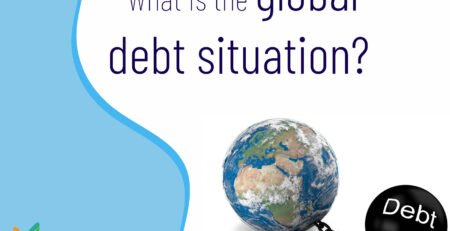Is Edelweiss NCD Safe to Invest? Complete Investment Guide for 2024-2025
Understanding Edelweiss Financial Services NCD Investment Opportunity
Edelweiss Financial Services Limited (EFSL) has emerged as a significant player in India’s investment landscape, offering Non-Convertible Debentures (NCDs) with attractive yields reaching up to 10.49% annually. For investors seeking stable fixed-income instruments, understanding the safety profile of Edelweiss NCDs becomes crucial before making investment decisions.
The Mumbai-based investment banking firm has been publicly traded since 2007 under NSE: EDELWEISS and BSE: 532922 symbols. With over 5,946 employees and a pan-India network comprising 252 domestic offices and 3 international offices as of December 2024, Edelweiss has established itself as a diversified financial services provider.
Credit Rating Analysis: The Safety Foundation
The safety of any NCD investment primarily depends on its credit rating, which reflects the issuer’s ability to service debt obligations. Edelweiss Financial Services NCDs have been assigned a CRISIL A+/Negative rating by CRISIL Ratings Limited, indicating an adequate degree of safety regarding timely financial obligation servicing.
This A+ rating suggests that while the instruments carry low credit risk, the negative outlook indicates potential downward pressure on the rating. The rating reflects the company’s current financial position and its ability to meet debt obligations over the investment tenure.
Historical rating trends show that earlier NCD issues received CRISIL A+/Stable ratings, indicating that recent market conditions or company-specific factors have influenced the rating agency’s perspective.
Investment Terms and Return Analysis
Edelweiss NCD offers multiple investment tenures and payout options to cater to diverse investor preferences. The NCDs are offered across twelve series with coupon rates ranging from 9.5% to 11% per annum across different tenures of 24 months, 36 months, 60 months, and 120 months.
The interest payment structure provides flexibility with annual, monthly, or maturity-based payouts. This variety allows investors to align their investment strategy with cash flow requirements and risk tolerance levels.
Return Comparison in Current Market Context
In the current interest rate environment, Edelweiss NCD yields of up to 10.49% appear competitive compared to traditional fixed deposits and government securities. However, investors must weigh these attractive returns against the associated credit risk and liquidity constraints.
Company Financial Performance Overview
Edelweiss Financial Services operates through multiple business verticals including retail and corporate credit, asset management, wealth management, and insurance services. The company reported a 35% increase in consolidated PAT and outlined plans for debt reduction and strategic asset sales in recent quarters.
However, the company’s net profit fell 37.71% in Q4 2024-2025 compared to the same period last year, indicating some operational challenges that investors should consider.
Risk Assessment Framework
Credit Risk Evaluation
The A+ rating with negative outlook suggests moderate credit risk. While the company maintains adequate safety margins for debt servicing, the negative outlook indicates potential challenges that could affect future creditworthiness.
Liquidity Risk Considerations
NCDs typically have limited secondary market liquidity compared to stocks or mutual funds. Investors should consider this illiquidity factor, especially for longer-tenure instruments spanning 60 to 120 months.
Interest Rate Risk Impact
Fixed-rate NCDs carry interest rate risk, where rising market rates could make the locked-in yields less attractive. Conversely, falling rates would benefit existing NCD holders.
Regulatory Framework and Investor Protection
Edelweiss NCDs are issued under SEBI regulations governing debt securities. The secured nature of these debentures provides additional protection through asset backing, though investors should verify the quality and coverage of underlying collateral.
Suitability Analysis for Different Investor Profiles
Conservative Investors
Conservative investors seeking stable income with moderate risk tolerance may find Edelweiss NCDs suitable, particularly shorter-tenure options (24-36 months) that reduce exposure to long-term uncertainties.
Income-Focused Investors
Investors prioritizing regular income streams can benefit from monthly interest payout options, though they should assess the sustainability of these payments given the company’s recent performance fluctuations.
Risk-Tolerant Investors
Investors comfortable with moderate credit risk and seeking higher yields than traditional fixed deposits might consider longer-tenure NCDs for enhanced returns.
Due Diligence Checklist
Before investing in Edelweiss NCDs, investors should evaluate several key factors:
The company’s quarterly financial results and debt servicing capabilities require careful examination. Recent performance trends, including the 37.71% decline in net profit, warrant thorough analysis of underlying business fundamentals.
Sectoral performance within financial services, particularly in light of regulatory changes and market conditions, should influence investment decisions. The company’s exposure to various financial segments creates both diversification benefits and concentration risks.
Asset quality metrics, including non-performing assets and provisioning levels, provide insights into the company’s loan portfolio health and future earnings sustainability.
Investment Strategy Recommendations
Diversification remains crucial when investing in corporate NCDs. Rather than concentrating investments in a single issuer, spreading exposure across multiple companies and rating categories can reduce overall portfolio risk.
Tenure selection should align with personal financial goals and market outlook. Shorter tenures offer greater flexibility but potentially lower yields, while longer tenures provide higher returns but increase exposure to credit and interest rate risks.
Monitoring and Review Framework
Post-investment monitoring involves tracking the company’s quarterly results, rating changes, and broader financial sector developments. Regular review of the investment thesis helps identify potential exit opportunities or concerns requiring attention.
Rating agency actions, including outlook changes or rating downgrades, should trigger immediate portfolio review and potential rebalancing decisions.
Tax Implications and Considerations
Interest income from NCDs is taxable as per applicable income tax slabs. Investors should factor in the post-tax returns when comparing with other investment alternatives.
Tax-efficient investment timing and planning can optimize overall returns, particularly for investors in higher tax brackets.
Market Outlook and Timing Considerations
The current economic environment, characterized by evolving interest rate cycles and financial sector consolidation, creates both opportunities and challenges for NCD investments.
Macroeconomic factors including inflation trends, monetary policy directions, and regulatory changes in the financial sector could impact both the company’s performance and broader NCD market dynamics.
Alternative Investment Options
Investors should compare Edelweiss NCDs with other fixed-income alternatives including bank fixed deposits, government securities, corporate bonds from higher-rated issuers, and debt mutual funds.
Risk-adjusted returns, liquidity provisions, and investment convenience factors should guide the comparative analysis.
Conclusion and Investment Verdict
Edelweiss NCD presents a moderate-risk investment opportunity with attractive yields for investors willing to accept credit risk associated with an A+ rated financial services company. The negative rating outlook suggests caution, particularly for longer-tenure investments.
Investors should carefully assess their risk tolerance, investment horizon, and portfolio diversification needs before committing to Edelweiss NCDs. While the yields are attractive, the recent decline in profitability and negative rating outlook warrant careful consideration.
For risk-tolerant investors seeking higher yields than traditional fixed deposits, Edelweiss NCDs may be suitable as part of a diversified portfolio. However, conservative investors might prefer higher-rated alternatives or shorter investment tenures to manage risk exposure effectively.
The investment decision ultimately depends on individual financial goals, risk appetite, and the role of fixed-income instruments in the overall investment portfolio strategy.












